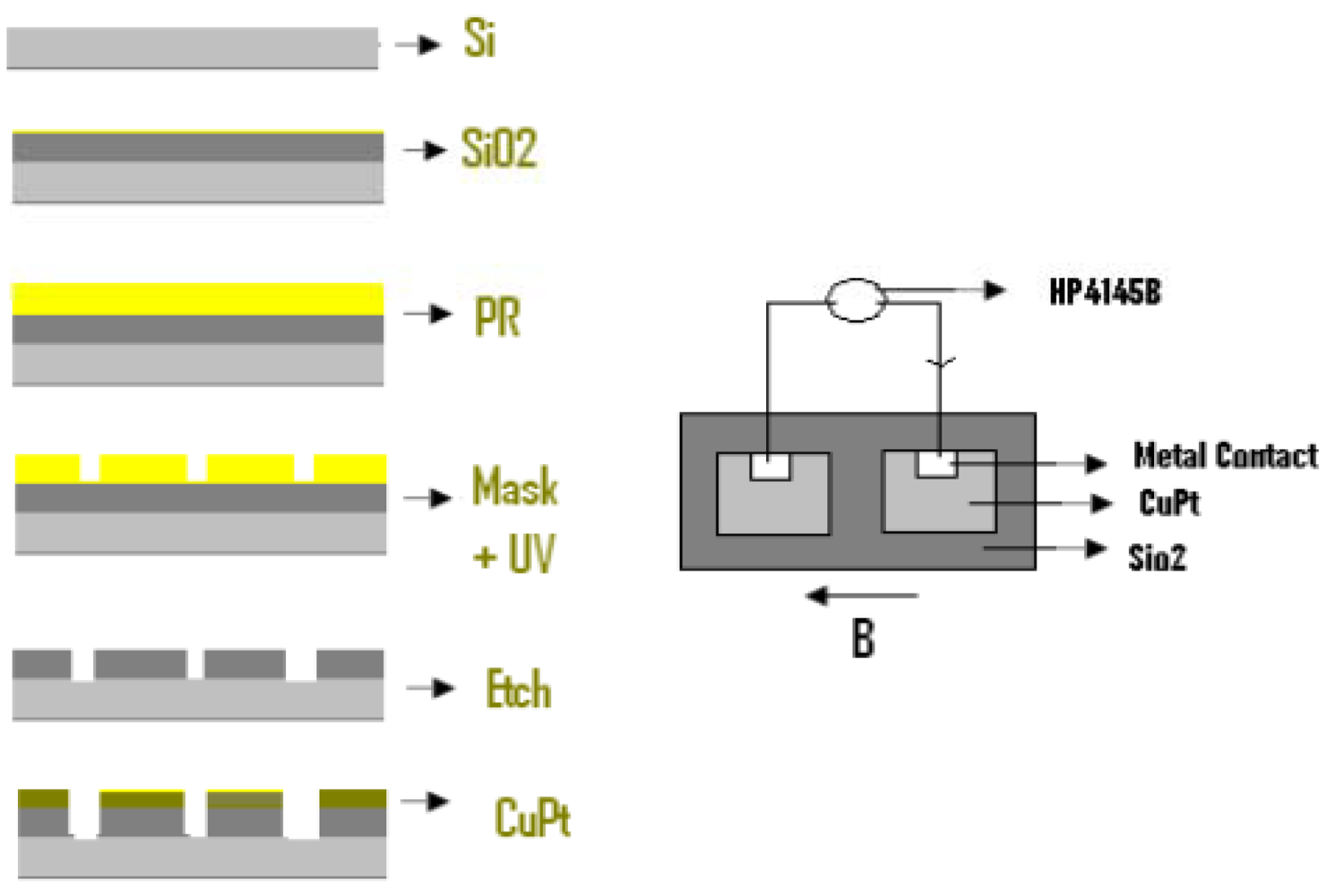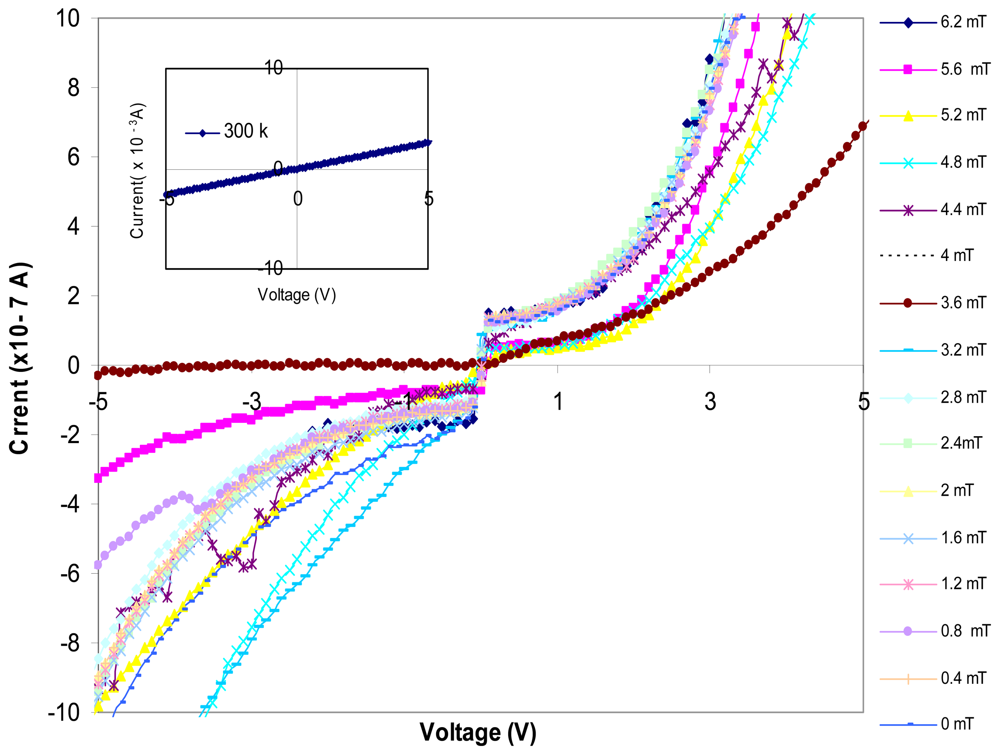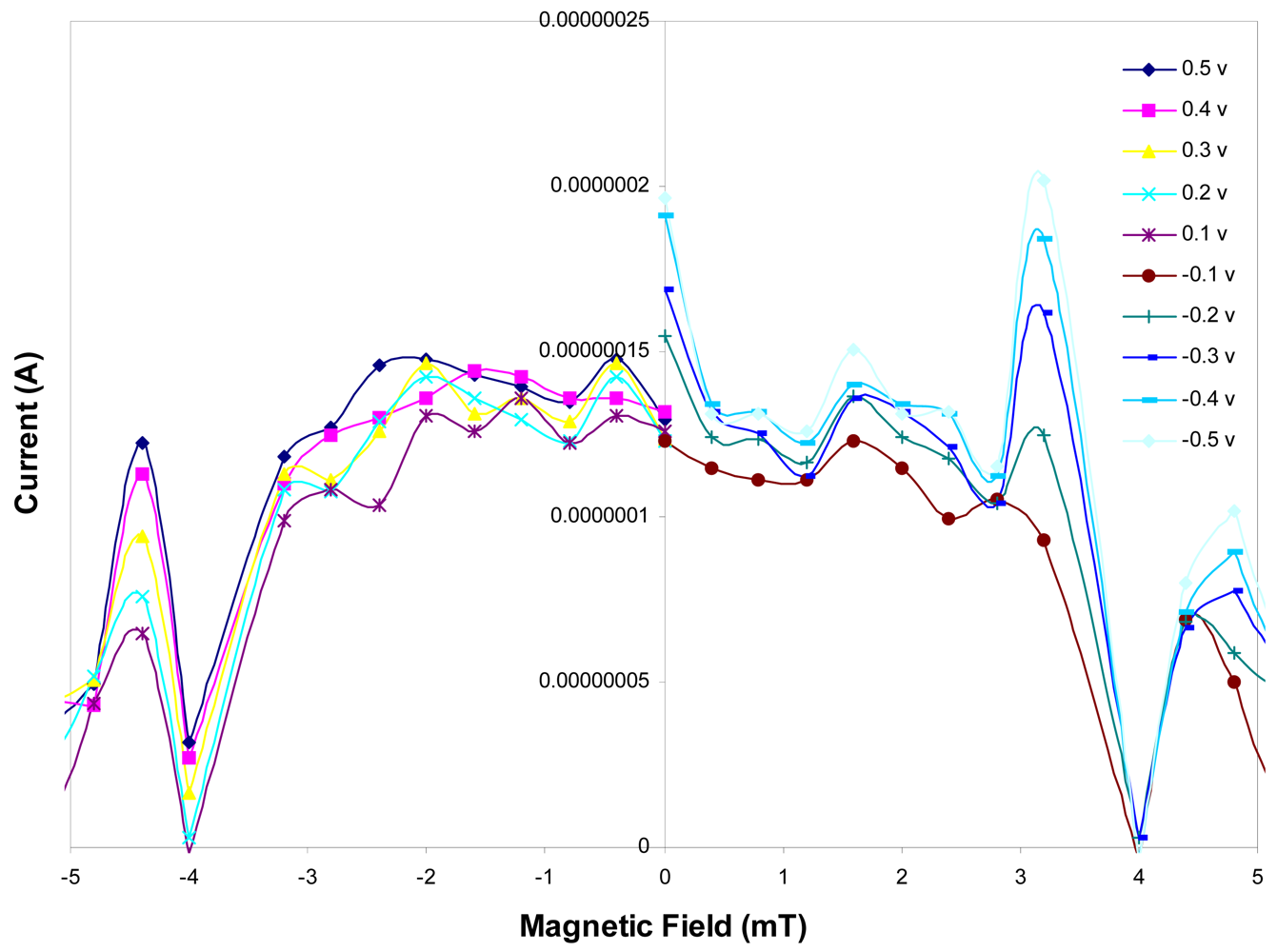Low Magnetic Field Detection Using a CuPt Nano Structure Made on a SiO2/Si Structure
Abstract
:1. Introduction
2. Results and Discussion
3. Experimental Section
4. Conclusions
Acknowledgments
References
- Pannetier, M.; Fermona, C.; Vedrine, P.; Welling, M.S.; Wijngaarden, R.J. Field line distribution in a mixed sensor. Sens. Actuat. B 2006, 129, 146–149. [Google Scholar]
- Winton, B.; Silver, T.; Dou, S.X. Cryogenic magnetic field sensor based on the magnetoresistive effect, in bulk Bi2212 + USr2CaO6, M. Appl. Phys. Lett. 2004, 84, 5335–5337. [Google Scholar]
- Kvon, Z.D.; Baturina, T.I.; Donaton, R.A.; Baklanov, M.R.; Kostrikin, M.N.; Maex, K.; Olshanetsky, E.B.; Portal, J.C. Maki–Thompson corrections in thin superconducting PtSi films nearby Tc. Physica B 2000, 284, 959–960. [Google Scholar]
- Baturina, T.I.; Horsell, D.W.; Islamovc, D.R.; Drebushchakc, I.V.; Tsaplin, Yu. A.; Babenko, A.A.; Kvon, Z.D.; Savchenko, A.K.; Plotnikov, A.E. Josephson junction arrays on the basis of superconducting PtSi films. Physica B 2003, 329, 1496–1497. [Google Scholar]
- Tezuka, N.; Miyazaki, T. Barrier height dependence of MR ratio in Fe/A1-oxide/Fe junctions. J. Magn. Magn. Mater. 1998, 178, 1283–1284. [Google Scholar]
- Miyazaki, T.; Tezuka, N. Giant magnetic tunneling effect in Fe/Al2O3/Fe junction. J. Magn. Magn. Mater. 1995, 139, L231–L234. [Google Scholar]
- Wei, H.X.; Wang, T.X.; Zeng, Z.M.; Zhang, X.Q.; Zhao, J.; Han, X.F. Controlled fabrication of nano-scale double barrier magnetic tunnel junctions using focused ion beam milling method. J. Magn. Magn. Mater. 2006, 303, 208–211. [Google Scholar]
- Sze, S.M. Special Microwave Device. In Semiconductor Devices: Physics and Technology, 2nd ed.; Wiley Interscience Publication: New York, NY, USA, 1981; pp. 513–566. [Google Scholar]
- Schoonus, J.J.H.M.; Bloom, F.L.; Wagemans, W.; Swagten, H.J.M.; Koopmans, B. Extremely large magnetoresistance in boron-doped ilicon. Phs. Rev. Lett. 2008, 127202, 1–2. [Google Scholar]
- Hajghassem, H.; Erfanian, A.R.; Banihashemian, S.M.; Aliahmadi, M.R.; Mohtashamifar, M. Observation of large magnetic resistance in weak magnetic fields using CuPt/SiO2/Si/SiO2/CuPt Structure. J. Magn. Magn. Mater. 2009, 321, 2733–2736. [Google Scholar]
- Liu, X.; Bauer, M.; Bertagnolli, H.; Roduner, E. Structure and magnetization of small monodisperse platinum clusters. Phys. Rew. Lett 2006, 97, 253401. [Google Scholar]
- Kubo, R. Electronic properties of metallic fine particles. J. Phys. Soc. Jpn. 1962, 17, 975–986. [Google Scholar]





© 2009 by the authors; licensee Molecular Diversity Preservation International, Basel, Switzerland. This article is an open access article distributed under the terms and conditions of the Creative Commons Attribution license (http://creativecommons.org/licenses/by/3.0/).
Share and Cite
Hajghassem, H.; Banihashemian, S.M.; Aliahmadi, M. Low Magnetic Field Detection Using a CuPt Nano Structure Made on a SiO2/Si Structure. Sensors 2009, 9, 9734-9740. https://doi.org/10.3390/s91209734
Hajghassem H, Banihashemian SM, Aliahmadi M. Low Magnetic Field Detection Using a CuPt Nano Structure Made on a SiO2/Si Structure. Sensors. 2009; 9(12):9734-9740. https://doi.org/10.3390/s91209734
Chicago/Turabian StyleHajghassem, Hassan, Seyedeh Maryam Banihashemian, and Majidreza Aliahmadi. 2009. "Low Magnetic Field Detection Using a CuPt Nano Structure Made on a SiO2/Si Structure" Sensors 9, no. 12: 9734-9740. https://doi.org/10.3390/s91209734



